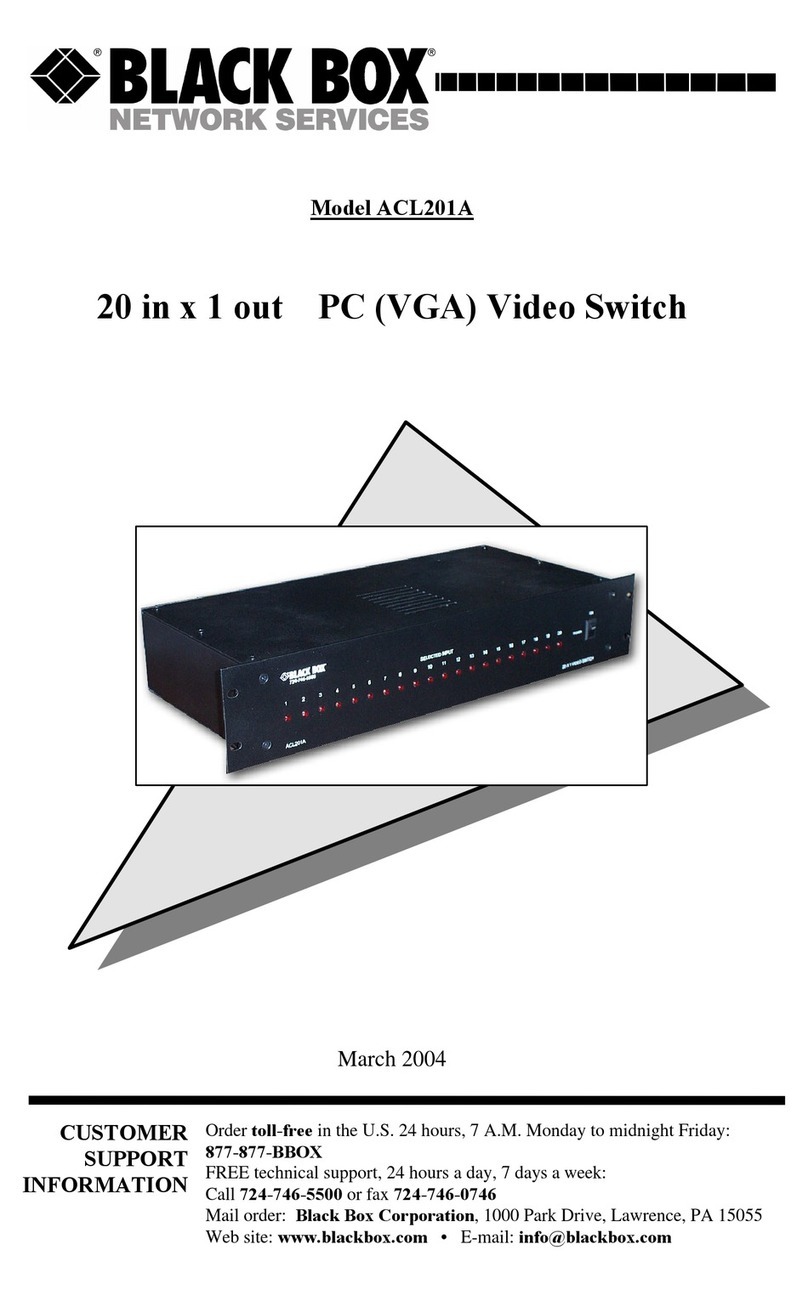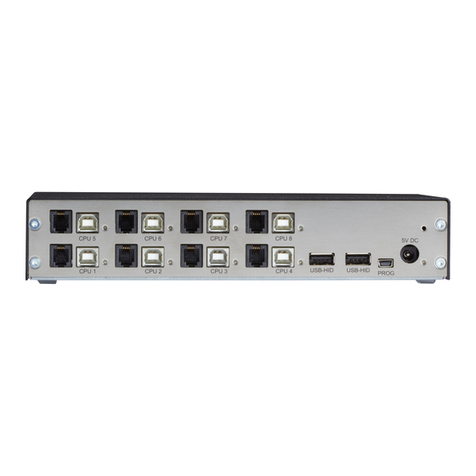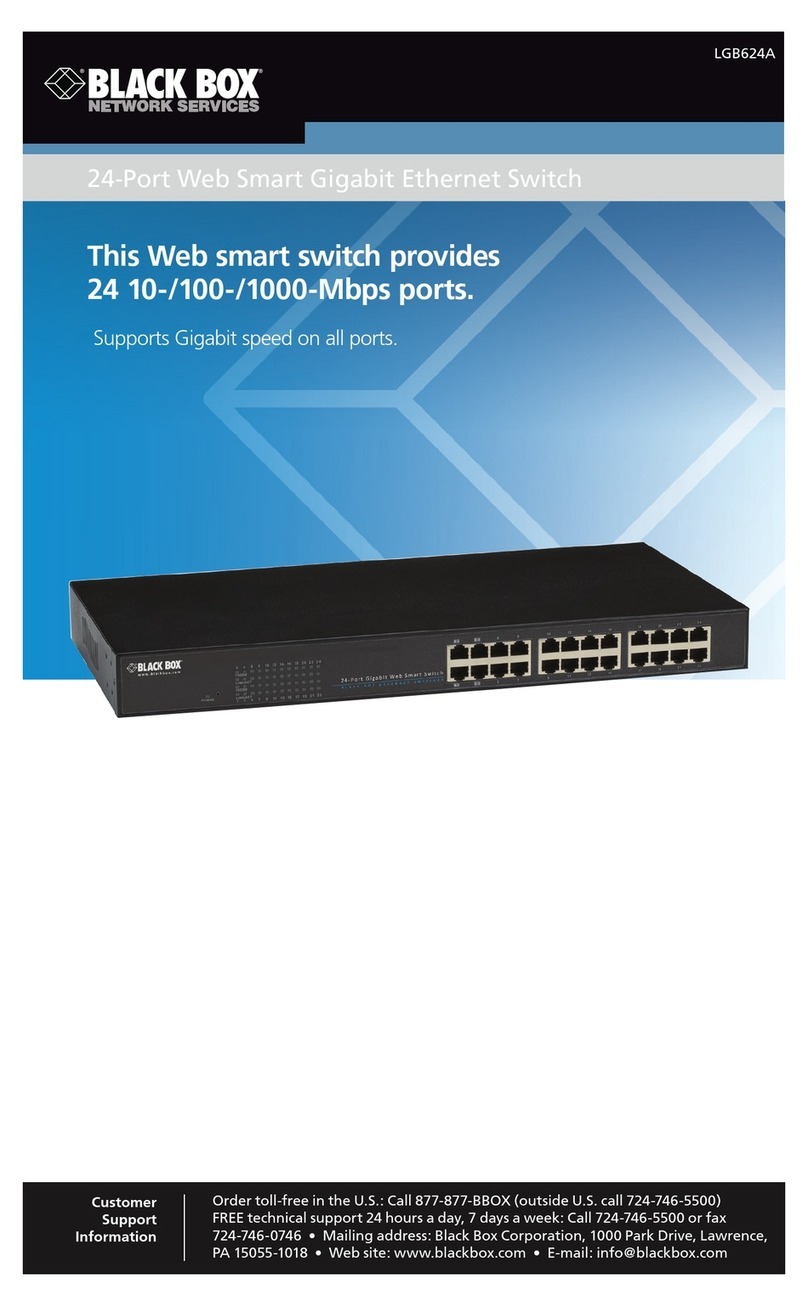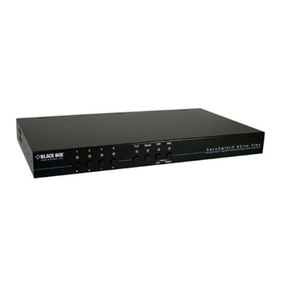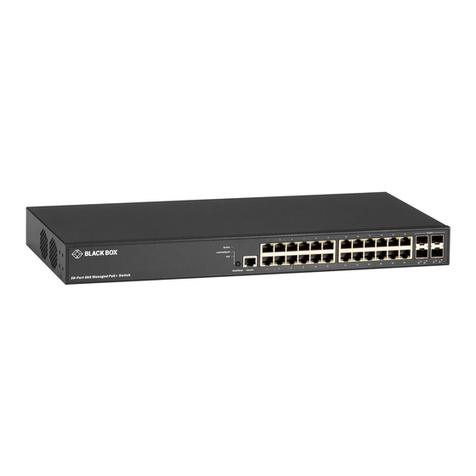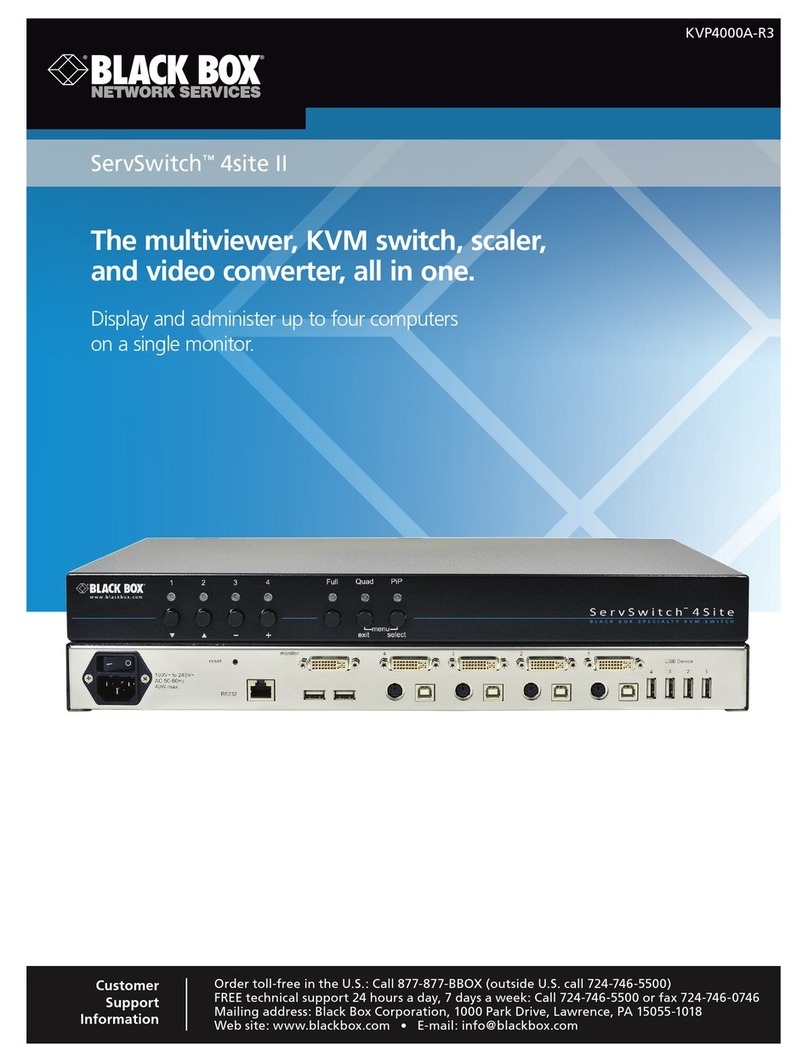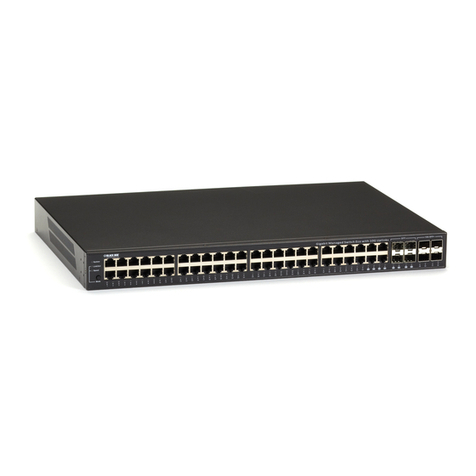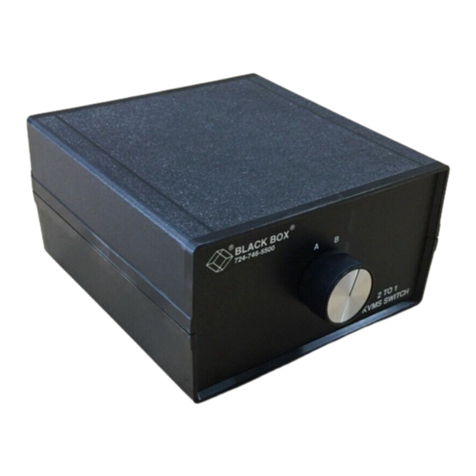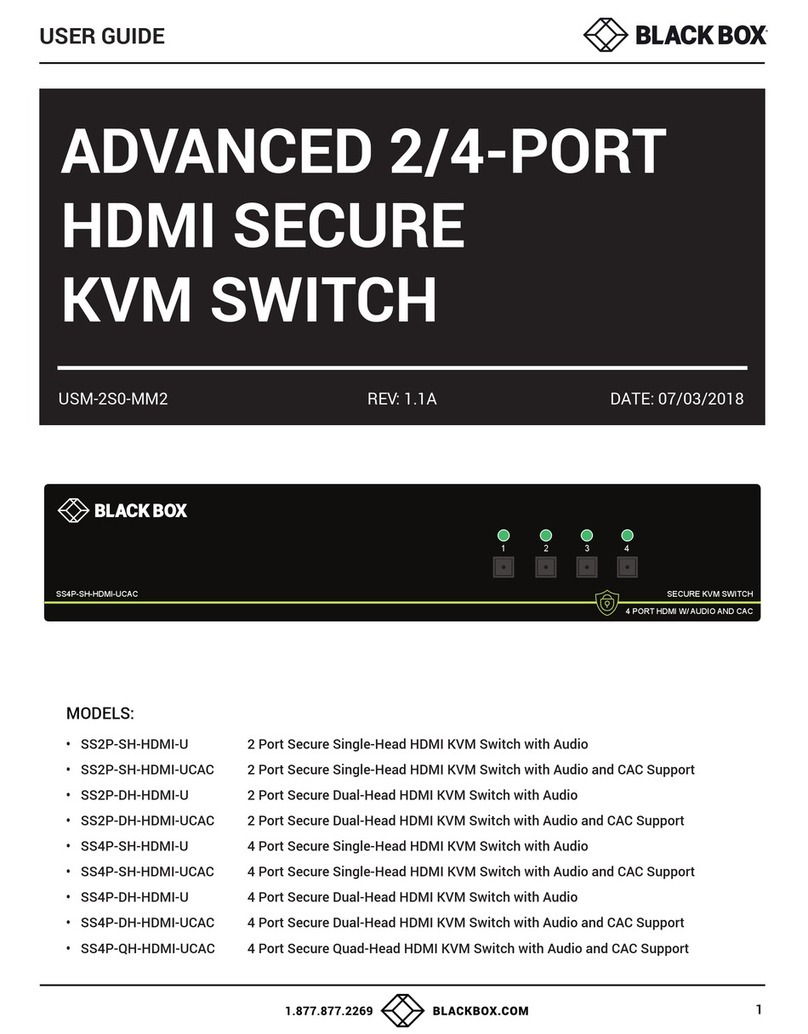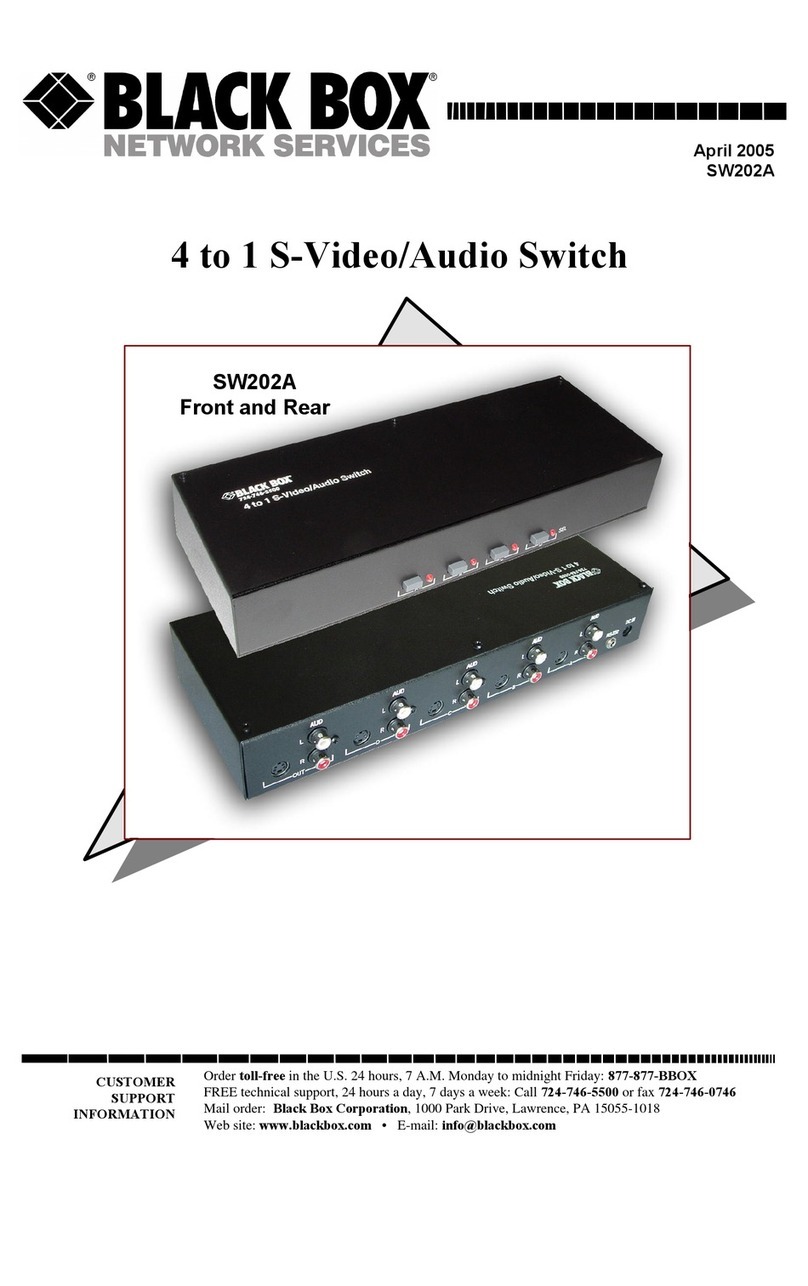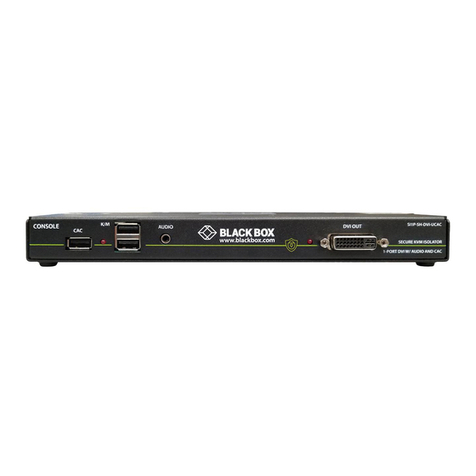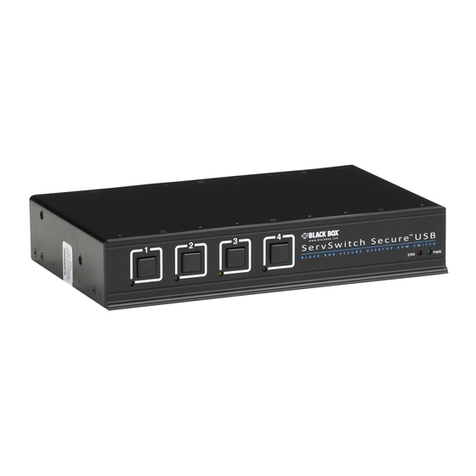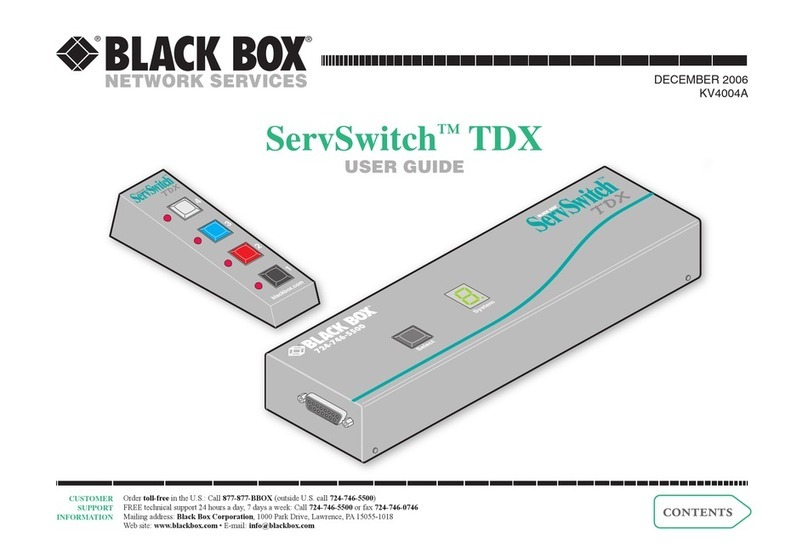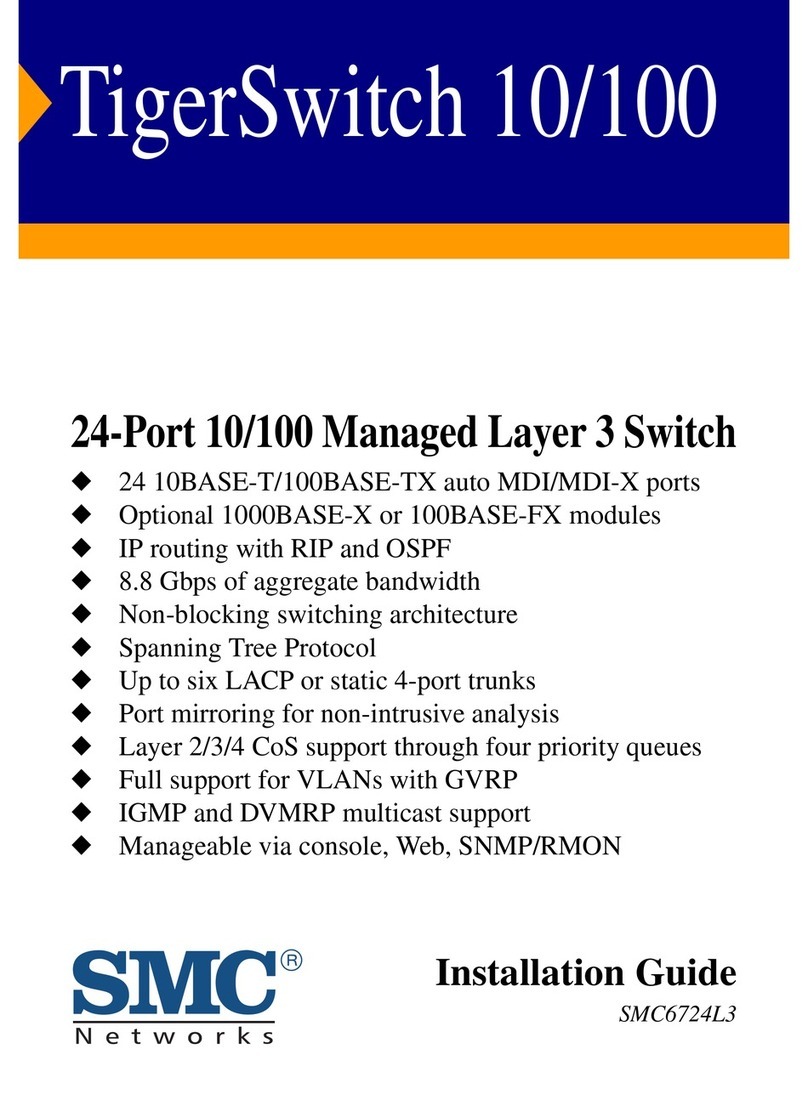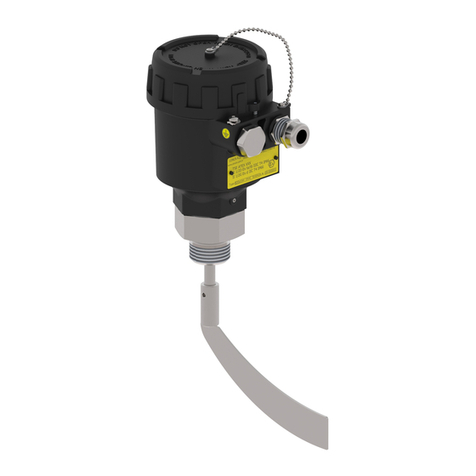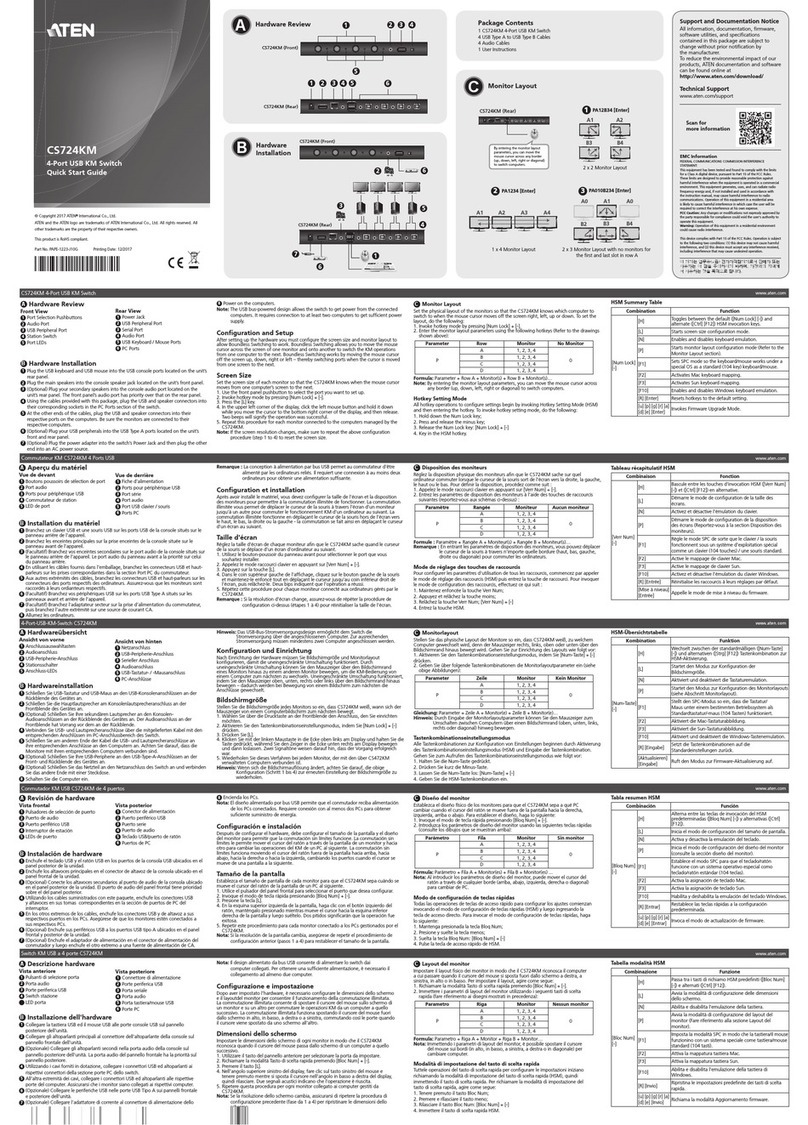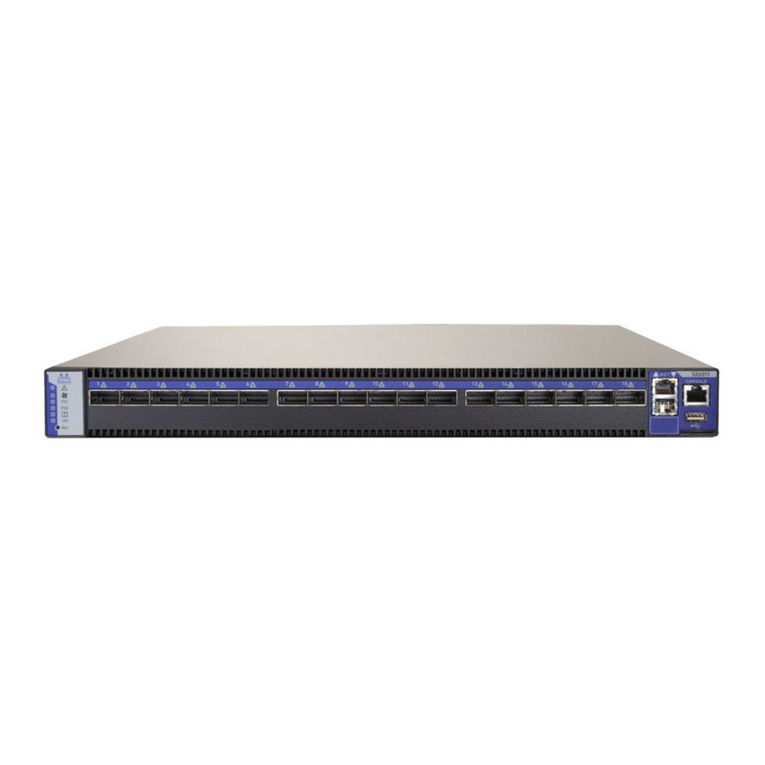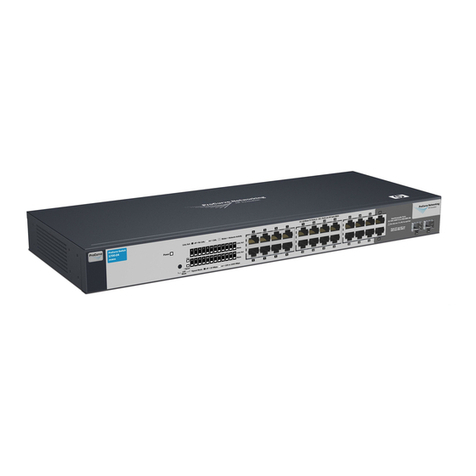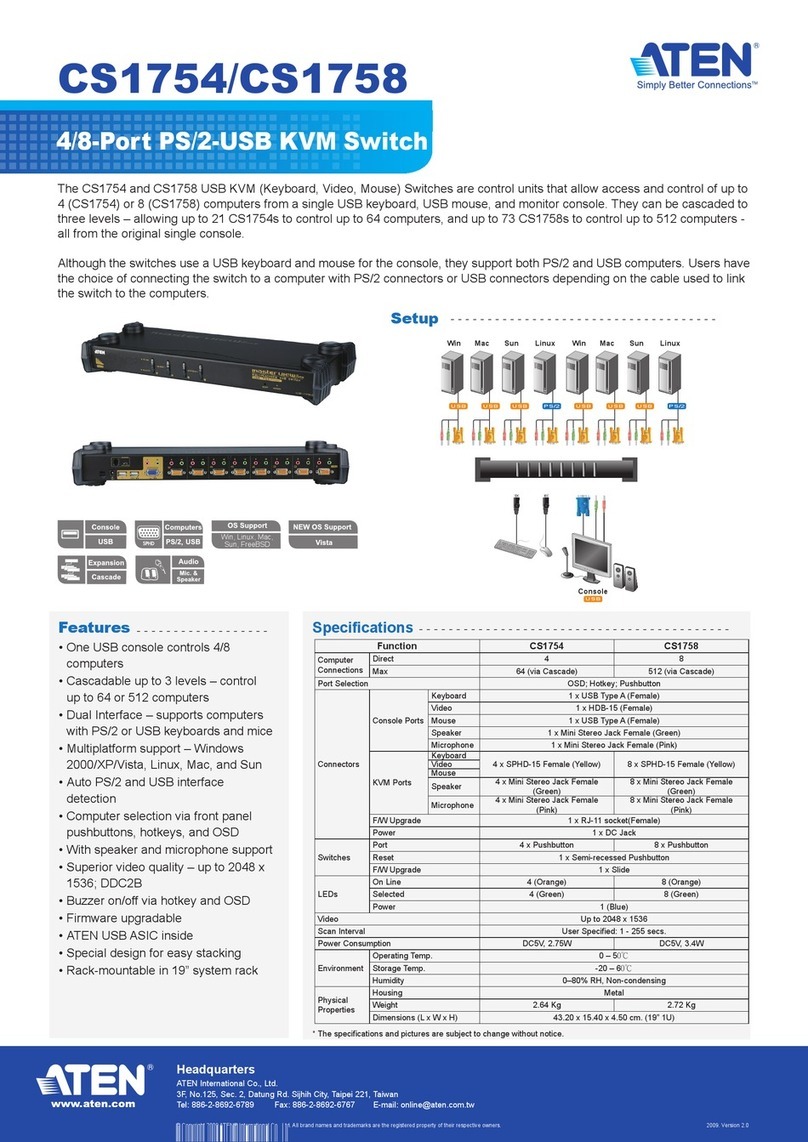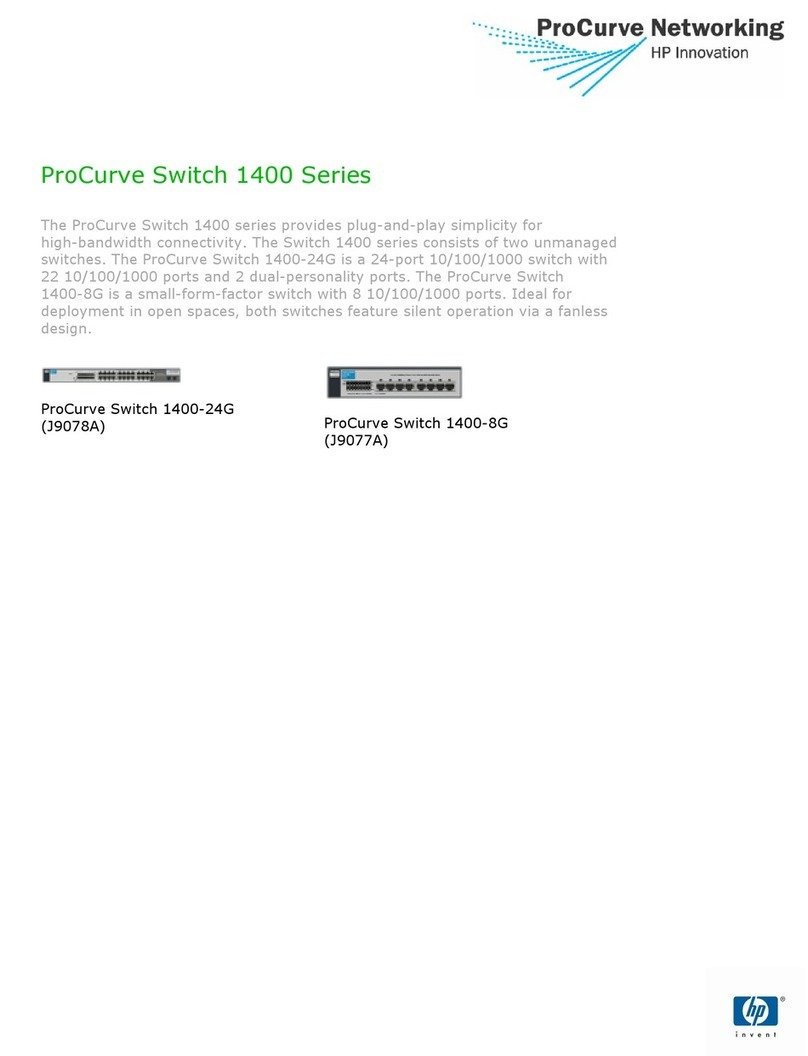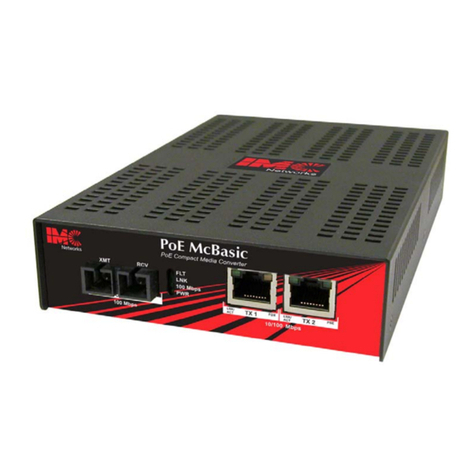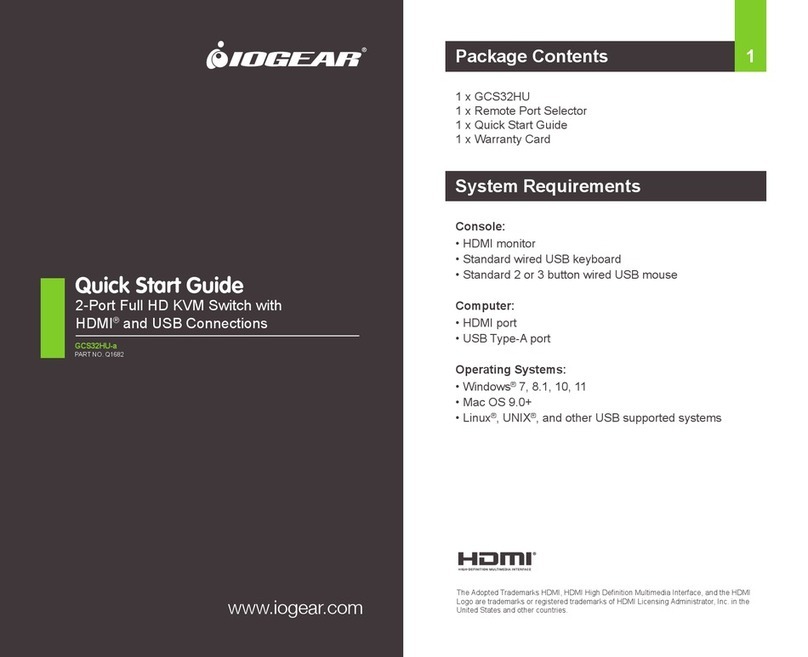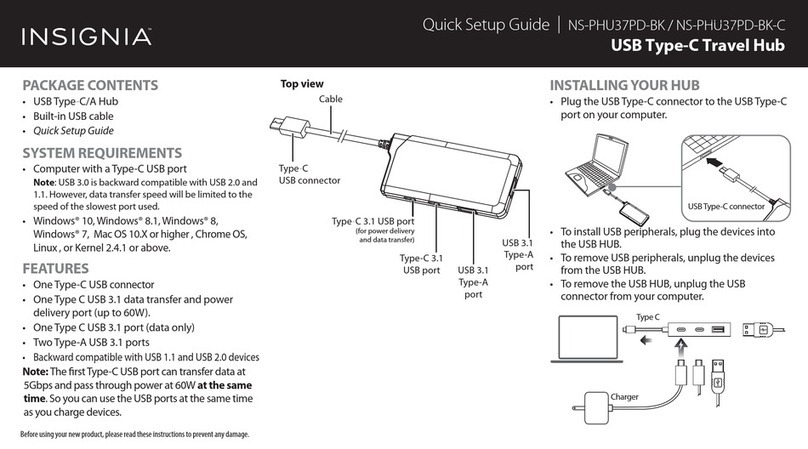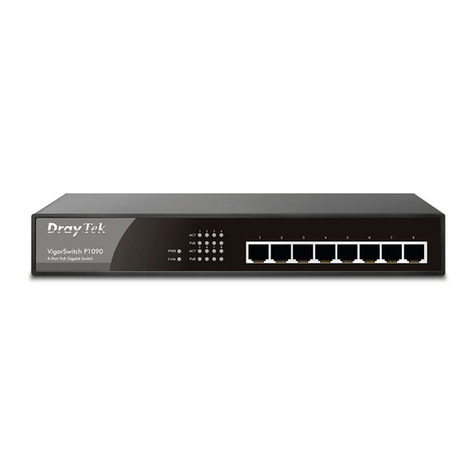13
CHAPTER 4: Operation
NOTE: Any port can issue the Unlink command,
even if that port is not one of the two ports
that will be unlinked. For example, Port 5
could command Port 2 and Port 3 to unlink.
DA — Disconnect All
When the Code Operated Matrix Switch receives an
ATTENTION string followed by DA, it will break
every link currently defined. The buffers are
purged, and any data in them is lost.
T — Transparent Link
A TRANSPARENT LINK is similar to a REGULAR
LINK, with only this exception: When a port is
transparently linked, the Switch will no longer
honor an ATTENTION string from that port. The
ATTENTION string is treated as data, to allow all
data to pass between two ports. If you want to break
a Transparent Link, you must enable break
detection (see Section 4.4), then send a break to
the switch from either of the devices attached to the
transparently linked ports (see B—Send Break). You
can also send the U—Unlink command from one of
the unattached ports.
When the Code Operated Matrix Switch receives
an ATTENTION string followed by a Tand two
PORT NUMBERS, it attempts to set up a bi-
directional TRANSPARENT link between these two
ports. If either of these ports is already linked, the
Code Operated Matrix Switch sends a message to
the port that issued the command, indicating that
the link was not made. Otherwise, the two ports link
and the Code Operated Matrix Switch sends a
message to the port that issued the command
indicating that the link was successful.
NOTE: Any port can issue the Transparent Link
command, even if that port is not one of the
two ports being transparently linked. For
example, Port 1 could issue a command to
transparently link Port 2 to Port 5.
B — Send Break
The Switch uses a break condition to unlink a pair
of ports. When it receives an ATTENTION string
followed by a Band a PORT NUMBER, it sends a
250-millisecond break condition out the indicated
port. Then it sends a message to the port that issued
the command, indicating that the break was sent.
NOTE: Any port can issue the Send Break
command. For example, Port 3 could issue a
command to send a break out Port 4.
A — Set Attention
When the Code Operated Matrix Switch receives an
ATTENTION string followed by an Aand a Port
number, it echoes the Aand the port number to
the indicated port. The Code Operated Matrix
Switch then waits for a 0- to 8-character
ATTENTION string followed by Return. If control
characters are entered, they will appear on the
screen as ^<letter>, where <letter> is the key you
pressed while holding down the control key. If a
zero-length ATTENTION string is entered for a
port, you will no longer be able to send commands
from that port.
NOTE: Any port can issue the Set Attention
command. For example, Port 5 could issue a
command to set the attention string for
Port 6. If you need more security, you can
designate Port 0 as the only port capable of
changing an attention string, by setting
Switch F’s Position 2 to ON.
N — Set Port Name
When the Code Operated Matrix Switch receives an
ATTENTION string followed by an Nand a PORT
NUMBER, it echoes the Nand the PORT NUMBER
to the indicated port. The Code Operated Matrix
Switch then waits for a 1 to 8 character PORT
NAME followed by Return.
NOTE: Any port can issue the Set Port Name
command. For example, Port 7 could issue a
command to set the port name for Port 8.
You can designate Port 0 as the only port
capable of changing a Port Name, by setting
Switch F’s Position 2 to ON.
S — Save
When the Code Operated Matrix Switch receives an
ATTENTION string followed by an S, it will save the
current connection matrix in nonvolatile memory.
This will preserve any combination of regular and
transparent links. After this Save operation is
completed, the links you saved will be restored any
time the Switch is reset.






















